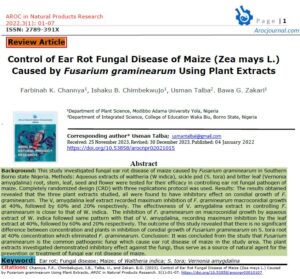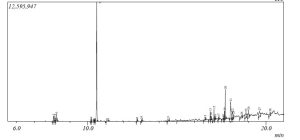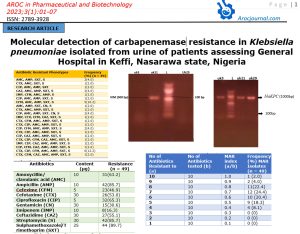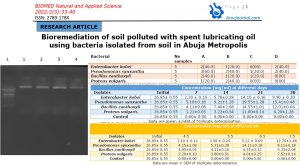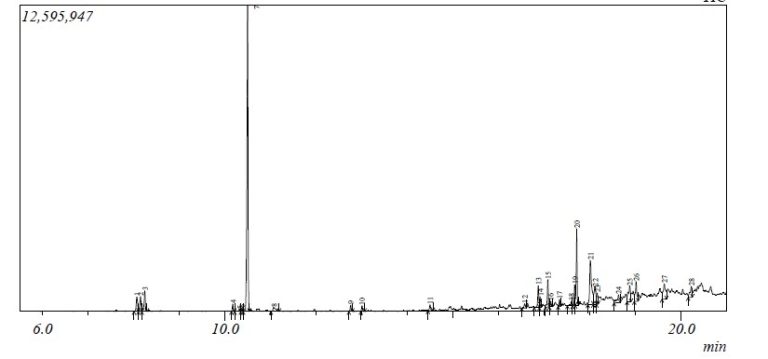- Introduction
The dynamic nature of populations of all species to fluctuate over time is a constant phenomenon that happens in nature. The degree to which this occurs depends on several complex interactions that exist between the ecosystem and the biology of the species. Some of the changes in environmental conditions may become favourable to increase the population size and vice versa [1]. On the other hand, if condition becomes unfavorable, extreme circumstances can result in a tragic decrease in numbers leading to a total loss of species and becoming extinct [2]. These changes include habitat disturbance due to fragmentation, water quality, invasions by alien species, exposure of protected areas and human interference through harvesting [2].
Tracking the trends of population size is one of the key indicators to monitor changes within the ecosystem vis-à-vis species distribution and abundance. The advantage of this indicator is that; it is simple, clear picture of changes in biodiversity over time can easily be communicated [3].
Pangolins are mammals of the order Pholidota. The one extant family, Manidae, has three genera: Manis, which comprises four species living in Asia, Phataginus, which comprises two species living in Africa, and Smutsia. Four species of pangolins are native to Africa, including the Cape Pangolin (Manis temmincki), Giant Pangolin (Manis gigantean), Long-tailed or Black-bellied Pangolin (Manis tetradactyla) and Tree or African, White-bellied Pangolin (Manis tricuspis). These species range in size from 30 to 100 cm (12 to 39 in) [4].
Several extinct pangolin species are also known. Pangolin species have been recently included in the Appendix I of the Convention on International Trade in Endangered Species of Wild Fauna and Flora, where international trading for commercial purposes of listed species is strictly prohibited. Pangolins have large, protective keratin scales covering their skin, and they are the only known mammals with this feature. They live in hollow trees or burrows, depending on the species [4, 3].
Pangolins are nocturnal, and their diet consists of mainly ants and termites which they capture using their long tongues. As ant predator, it preys more on termites has a specialized diet and does perform an important ecological role in regulating insect populations. An adult pangolin has been estimated to consume over 70 million insects annually; this plays a significant influence on the control of forest termites [5]. Besides its ecological values, pangolins are extremely sort for owing to economic value base on its medicinal benefits aside being considered a delicacy [3]. They tend to be solitary animals, meeting only to mate and produce a litter of one to three offspring which are raised for about two years [6].
Pangolins are threatened by hunting (for their meat and scales), heavy deforestation of their natural habitats, and are the most trafficked mammals in the world. Of the eight species of pangolin, four (Phataginus tetradactyla, P. tricuspis, Smutsia gigantean, and S. temminckii) are listed as vulnerable, two (Manis crassicaudata and M. culionensis) are listed as endangered and the Pentadactyla and M. javanica are listed as critically endangered on the International Union for Conservation of Nature Red List of Threatened Species [7].
This study focuses on documenting the population of pangolin in Mbe mountain to enhance the conservation in Cross-river National Park, Nigeria as well provide information on its distribution in the study area. This will further promote the preservation in the area.
2.0 Methodology
2.1 Description of the Study Area
Mbe Mountain Corridor is located on latitude 06’12N and longitude 009’00E. Mbe mountains is found in Northern Cross River state along Ikom-Obudu highway surrounded by nine (9) communities which are the traditional owners of the tropical dense forest. Mbe Mountains is a viable corridor linking the Okwango division of Cross River National Park with the Afi Mountain Wildlife Sanctuary of Cross River States Forestry Commission. The annual rainfall of the are falls within 3,000mm-3800mm but with a variation increasing from lowland to uphill [8].
2.2 Data collection
Line transect were set out using the existing trails in the study area (Obue, Mbe and Mbep trail); data were collected for a period of four (4) months (September to December 2020). Sites were visited five days in every month of the study. Period of visit was between 7.00 am- 10.00 am in the morning and 4.00pm to 6.00 pm in the evening. Transects were traversed with a vehicle and on foot at approximately 4km/hr and counting of Pangolin seen within the transect. Data obtained was analyzed using descriptive statistics (tables, chart, and graphs).
3.0 Result and Discussion
Table 1 shows the spatial distribution of Pangolin (Phataginus tetradactyla) in the study area for a period of four months (September– December 2020). In which Obue trail had the highest percentage of 56.3%, follows by Mbe trail with 31.2% and the least was sighted in Mbep trail with 12.5%. The month of December had the highest number of observations (9), followed by October with 3 observations while in the month of September and November only 2 observations were recorded each.
Table 1: Spatial Distribution of Pangolin (Phataginus tetradactyla) in the Study Area for a Period of Four Months (September-December)
| Trail | September | October | November | December | Total | Percentage (%) |
| Mbe | 1 | – | 1 | 3 | 5 | 31.2 |
| Mbep | – | – | – | 2 | 2 | 12.5 |
| Obue | 1 | 3 | 1 | 4 | 9 | 56.3 |
| TOTAL | 2 | 3 | 2 | 9 | 16 | 100.0 |
Source (Field survey, 2020).
Table 2 shows that females were more than the male with 5 observations as against the female with 11 observations. The population structure of pangolin (P. tetradactyla) in the study area as shows in table 3, sub-adult was the highest (7) while adult and juvenile were 5 and 4 observations respectively.
Table 2: Sex Distribution of Pangolin (Phataginus tetradactyla) in the study area.
| Trails | Males | Females | Total |
| Mbe | 2 | 3 | 5 |
| Mbep | – | 2 | 2 |
| Obue | 3 | 6 | 9 |
| TOTAL | 5 | 11 | 16 |
Source (Field survey, 2020)
Table 3: Population Structure of Pangolin (Phataginus tetradactyla) in the Study Area.
| Trails | Juvenile | Sub-Adult | Adult | Total |
| Mbe | 2 | 1 | 2 | 5 |
| Mbep | – | 1 | 1 | 2 |
| Obue | 2 | 5 | 2 | 9 |
| TOTAL | 4 | 7 | 5 | 16 |
Source (Field survey, 2020)
Table 4: Pangolin (Phataginus tetradactyla) Vegetation Distribution in the Study Area.
| Trails | Total Number of Animal Sighted | Percentage (%) | Vegetation Type |
| Mbe | 5 | 31.2 | Terminalia superba |
| Mbep | 2 | 12.5 | Brachystegia eurycoma |
| Obue | 9 | 56.3 | Diospyros mistiliformis |
| TOTAL | 16 | 100.0 |
Source (Field survey, 2020).

Figure 1: Differences Activities of Pangolin (Phataginus tetradactyla) with their frequency
The vegetation distribution of pangolin in the study area as shown in table 4, revealed that Diospyros mistiliformis vegetation had the highest percentage (56.3%) presence followed by Terminalia superba with 31.2% while Brachystegia eurycoma vegetation was the least with 12.5% observation. Figure 1 however shows different activities carried out by pangolin in the study area, from the figure pangolin enjoyed more of running with 7 observations than feeding activities (5) while sleeping activity was the least observed (1).
The highest number of pangolin sighted was within the Diospyros mistiliformis vegetation, unlike Akande et al., [3] which found that the highest observation was within the riparian forest while Detarium microcarpum woodland with (16.2%) was the least. This agrees with Fretwell and Luca [9] who described a habitat as being an area that is homogeneously important with factors associated with its inhabitants.
Such determination may be difficult this constant moving animal. As observed by Akande et al., [3] in DeVilliers and Roux, [10] report which observed that other uncollared pangolin may have monopolized some of the areas or habitat making feeding unsuitable for others. Majority of the animal were sighted in month of December; this corroborate the findings of Akande et al. [3] which found more of pangolin in the month of March suggesting that their activities were pronounce in dry season as against wet season. The relationship of the adult and young pangolins in the reserve shows a balance and presence of matured and young ones for sustainability of the species in the reserve. However, the population sampled suggests that though the status of pangolin has been moved from Appendix II to I which bans hunting/poaching and commercial trade of the animal [11]. The species is still under threat owing to the observation recorded.
4.0 Conclusion
This study has confirmed the presence of Pangolin in Mbe Mountain Corridor of Cross River National Park and their preferred vegetation. It is therefore recommended that: patrolmen who work only a daily basis should be absorbed into the permanent service to ensure their effective, with more patrol posts and stations around the park. Participation should be encouraged amongst the local communities in every step. While the Park authority intensifies anti-poaching patrol to stop/minimize humans from poaching. Conservation education should as well be carried out across communities surrounding the Park. This will enhance their knowledge on wildlife conservation.
Author Contributions: Introduction Adeola, A. J.; methodology, Ampitan, T. A., Babatunde, K. O., Mohammed, H. L; Data analysis, Result and Discussion, Adejoba, A. L. Adeola A. N.; writing/review and editing, all authors
Funding: This research received no external funding.
Conflicts of Interest: The authors declare no conflict of interest.
Acknowledgments: The authors are grateful to Management of Mbe Mountain Corridor of Cross-river National Park for giving us the access to use the Park and for providing us rangers who assist us in data collection. Also, we are highly grateful to our student Bessong, Titus Mbia for assisting us on the field also.
5.0 References
- Roots, C. (2007). Domestication. Greenwood Guides to the Animal World. Greenwood Pub Group. Pp 134.
- Dannenfeldt, K. H. (1985). Europe Discovers Civet Cats and Civet. Journal of the
History of Biology, 18 (3): 403-431 - Akande, O. A., Fajobi, E. A., Buochuama, A., Omole, E. B., Olaoye
O. and Alhassan, A. M. (2018). Distribution and Abundance of Pangolin (Phataginus
tetradactyla) in Borgu Sector of Kainji Lake National Park, Nigeria
World News of Natural Science. 21 (2018) 90-97 - Abdul. H.I, (1975). Habitat management for wildlife conservation with respect to fire, salt lick and water Regime. In Book of Wildlife Management in Savannah Woodland Cambridge University Press.
- Shi, Y.Q. and Wang, Y.G. (1985). Food habits on pangolin. Chinese Journal of Wildlife
6: 42–43 - Balsai, M. (1997). The general care and maintenance of popular monitors and tegus. Bowtie. p.6.
- Benjamin B.I (2007). Preservation of African Biodiversity in Nature Fauna FAO/UNDP Publication vol.8 No 1:74p
- Agbor, C. O. (2003). An Ecological Basis for the Management of Afi Mountains Wildlife Sanctuary, Cross River State. Agriculture and Biology Journal of North America, 3(12):486-492.
- Fretwell, S.D. and Lucas, H.L. (1970). On territorial behavior and other factors
influencing habitat distribution in birds. I. Theoretical development. Acta Biotheoretica,
19, 16-36. - De Villiers, D. J. and Roux, J.P. (1992). Mortality of Newborn Pups of the South African Fur Seal Arctocephalus pusillus pusillus in Namibia. South African Journal of
Marine Science 12, 881-889. - Challender, D. and Waterman, C. (2017). Implementation of CITES Decisions 17.239
b) and 17.240 on Pangolins (Manis spp.) Prepared by IUCN for the CITES Secretariat
128pp


